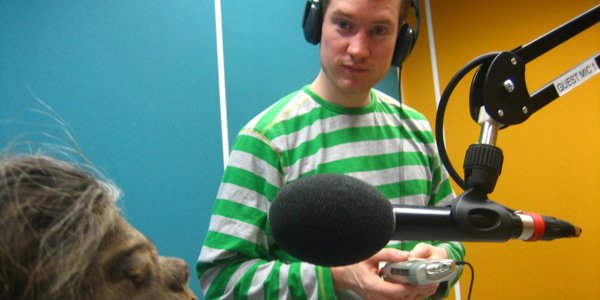The early days of Resonance FM with Chris Weaver

Resonance FM and Sourcefabric began brainstorming ideas for a 'perfect' open source radio automation software back in 2010. Not only have Resonance FM migrated to Sourcefabric's Airtime for all their automated playout, but the two organisations continue to work on new features. The partnership was rewarded when Airtime won Best Technology For Social Change at the Guardian Digital Innovation Awards in March 2012. Chris Weaver, production manager at, Resonance 104.4FM tells us about his first days at the station and how independent radio has impacted him.
How did all this start, eleven years ago? The tinkering, the fixing, install this, update that. Command line to BASH. From double click to install to sudo apt-get install Airtime?
I had heard of neither Resonance104.4fm (the station that I now am production manager for) nor the charity behind it (The London Musicians' Collective) when a scrap of the Guardian newspaper (a chance find on a bus in September 2002) told me about an interesting radio station called 'Residents FM' [sic]. Fresh out of a degree in Audio Technology, I decided to contact Residents FM[sic] for that sine qua non in any sound/media career: work experience.
My first few phone calls met only with an answering machine, presumably reverberating in the cavernous studios. I finally got through and spoke to the studio manager (the venerable Knut Aufermann) and as luck would have it, there was a slot on Wednesday available for a volunteer sound engineer. The station is still run by volunteer sound engineers even to this day, eleven years later.
Knut suggested that I come in and meet him. I waited for the usual work experience timetable, two to three months from now, but instead he replied, "Why not come and start tomorrow?"
New experiences in independent radio
Engineering at Resonance was nothing like the usual humdrum conjured up by the term "work experience". They were rather days of further education and experimentation with the possibilities of what radio could be. I also received tutoring in Asian musics, radical politics, mind-bending monologues - and all this in only four hours.
Needless to say radio became (and still is) a major, if not the biggest influence in my life. The schedule at Resonance was a sumptuous, sonic feast in comparison to the grey, rancid off-cuts offered up by the commercial stations I had stopped listening to.
The times have changed
Back in those days the station ran on a ramshackle of reclaimed PCs, running Windows 98 and networked via Microsoft's idea of the seventh circle of hell, the Network Neighbourhood. The schedule was powered by an idiosyncratic database written by one of our volunteers, that featured a "Go to the Pub" button in case of emergencies.
Writing this blogpost for Sourcefabric, I'm laughing as I compare the differences between then and now. The techno stone ages! The Internet was just above a fad, and Resonance was regularly streaming live-to-air concerts across unsecured office Wi-Fis (no-one seemed to mind back then!) Our idea of a playout system was iTunes, stuffed to the gills with strange Applescripts and an external hard drive. Oh the horrors of returning the next morning to find your 12 hour long playlist, painfully arranged, nothing more than a list of exclamation marks (iTunes indicating that it cannot locate the file), the night's broadcast a silent hiss (silence detection is available in the latest edition of Airtime).
- Airtime 2.3 was released last week and introduces interface localization in 11 new languages. Find out more details here.
